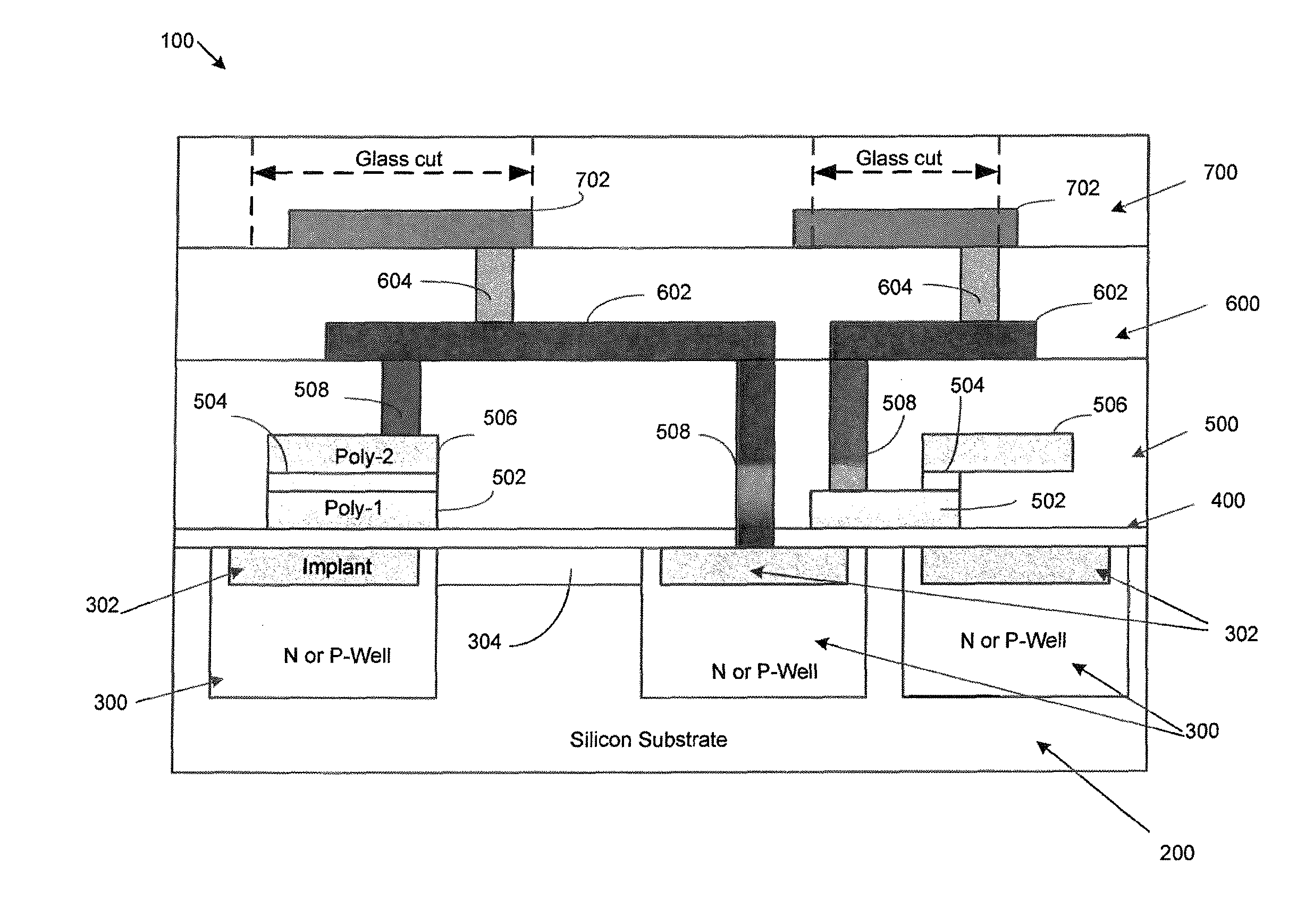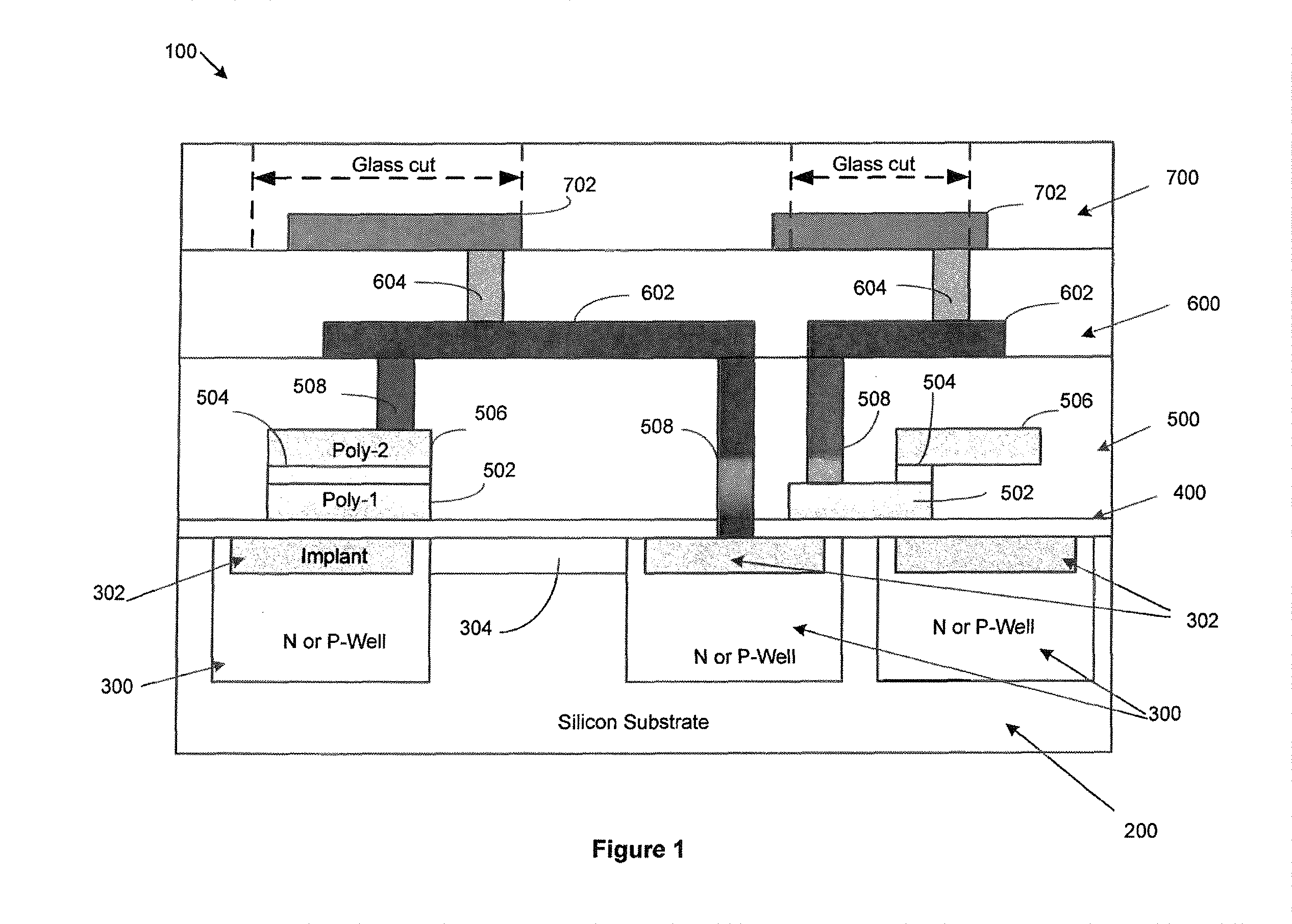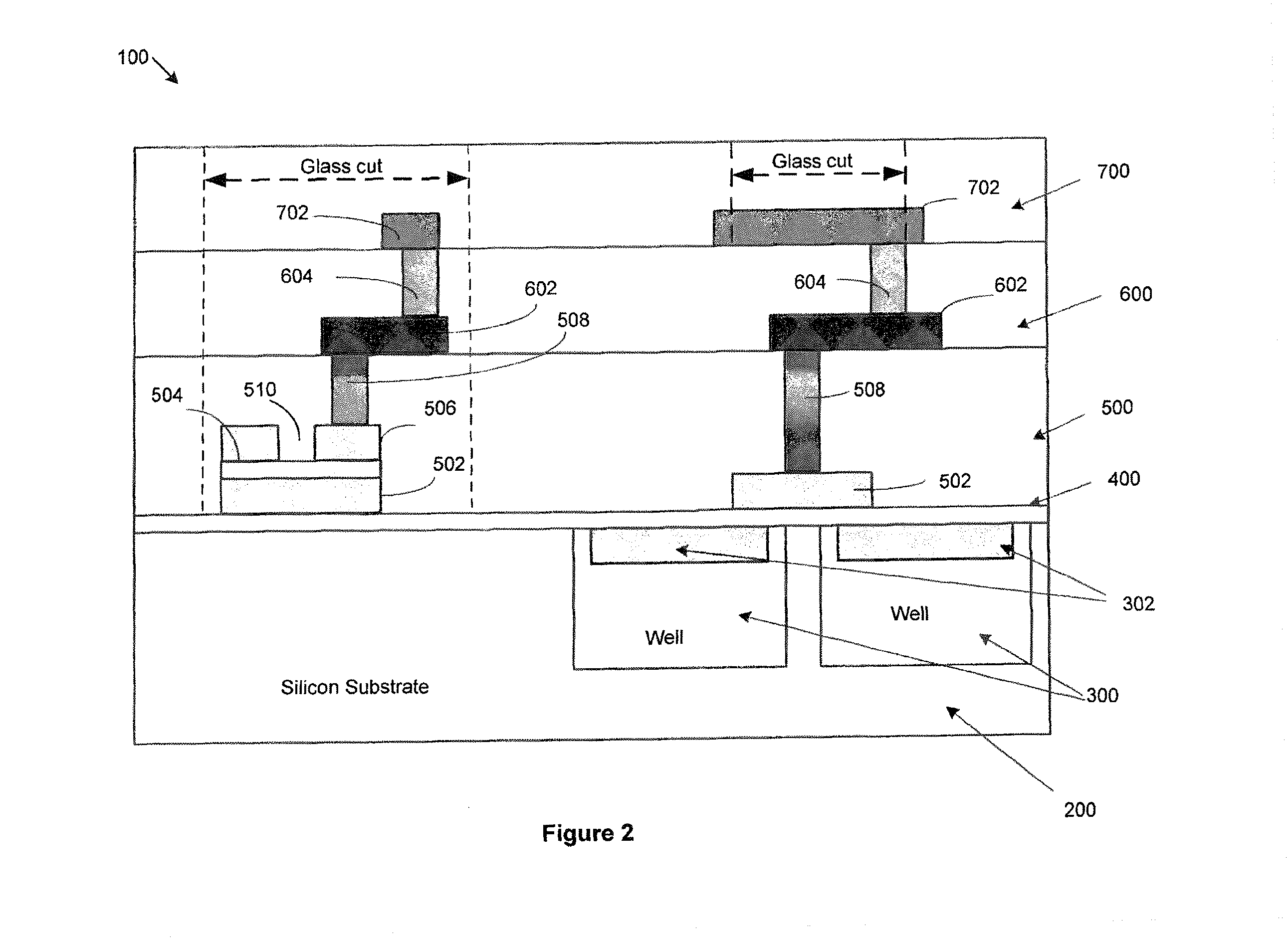CMOS integrated micromechanical resonators and methods for fabricating the same
a micromechanical resonator and integrated technology, applied in the direction of microstructural devices, acceleration measurement using interia forces, instruments, etc., can solve the problems of significant retooling and/or modification of the cmos foundry, the need for two foundry sequences to complete the device fabrication, and the standard cmos foundry process must include non-standard mems process sequences, etc., to achieve improved actuation and detection capabilities, improved yield, and reduced power consumption
- Summary
- Abstract
- Description
- Claims
- Application Information
AI Technical Summary
Benefits of technology
Problems solved by technology
Method used
Image
Examples
Embodiment Construction
[0032]Reference will now be made in detail to the present exemplary embodiments of the invention, examples of which are illustrated in the accompanying drawings. Wherever possible, the same reference numbers will be used throughout the drawings to refer to the same or like parts. An exemplary embodiment of the resonator device of the present invention is shown in FIG. 5, and is designated generally throughout by reference numeral 10.
[0033]As embodied herein, and depicted in FIG. 1, a cross-sectional schematic of the standard film stack for the AMIS ABN 1.5 μm fabrication process is depicted. The film stack shown in FIG. 1 corresponds, of course, to a standard layer map much like the one depicted in Table 1 above. The AMIS ABN 1.5 μm film stack is a two metal layer, two polysilicon layer film stack.
[0034]Proceeding from bottom to top, layer 200 corresponds to a silicon substrate. Once the silicon substrate 200 is provided, wells 300 are formed therein. The wells are formed by applyin...
PUM
| Property | Measurement | Unit |
|---|---|---|
| distance | aaaaa | aaaaa |
| distance | aaaaa | aaaaa |
| diameter | aaaaa | aaaaa |
Abstract
Description
Claims
Application Information
 Login to View More
Login to View More - R&D
- Intellectual Property
- Life Sciences
- Materials
- Tech Scout
- Unparalleled Data Quality
- Higher Quality Content
- 60% Fewer Hallucinations
Browse by: Latest US Patents, China's latest patents, Technical Efficacy Thesaurus, Application Domain, Technology Topic, Popular Technical Reports.
© 2025 PatSnap. All rights reserved.Legal|Privacy policy|Modern Slavery Act Transparency Statement|Sitemap|About US| Contact US: help@patsnap.com



